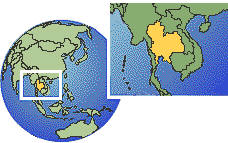Across Thailand -
Across Asia
Across Pacific & Asia
Across Pacific & Asia
Airports -
109 (2003 est.)
Heliports: 3 (2003 est.)
News
Bangkok's Independent Newspaper  Want your web site noticed on
this page? Contact: apa@across2u.com
Web Stats
|
| .......................................................................... |
.. |
...........................
.............................................................. .................
|
| ........ |
........ |


 Thailand is approximately the size of
France
Thailand is approximately the size of
France